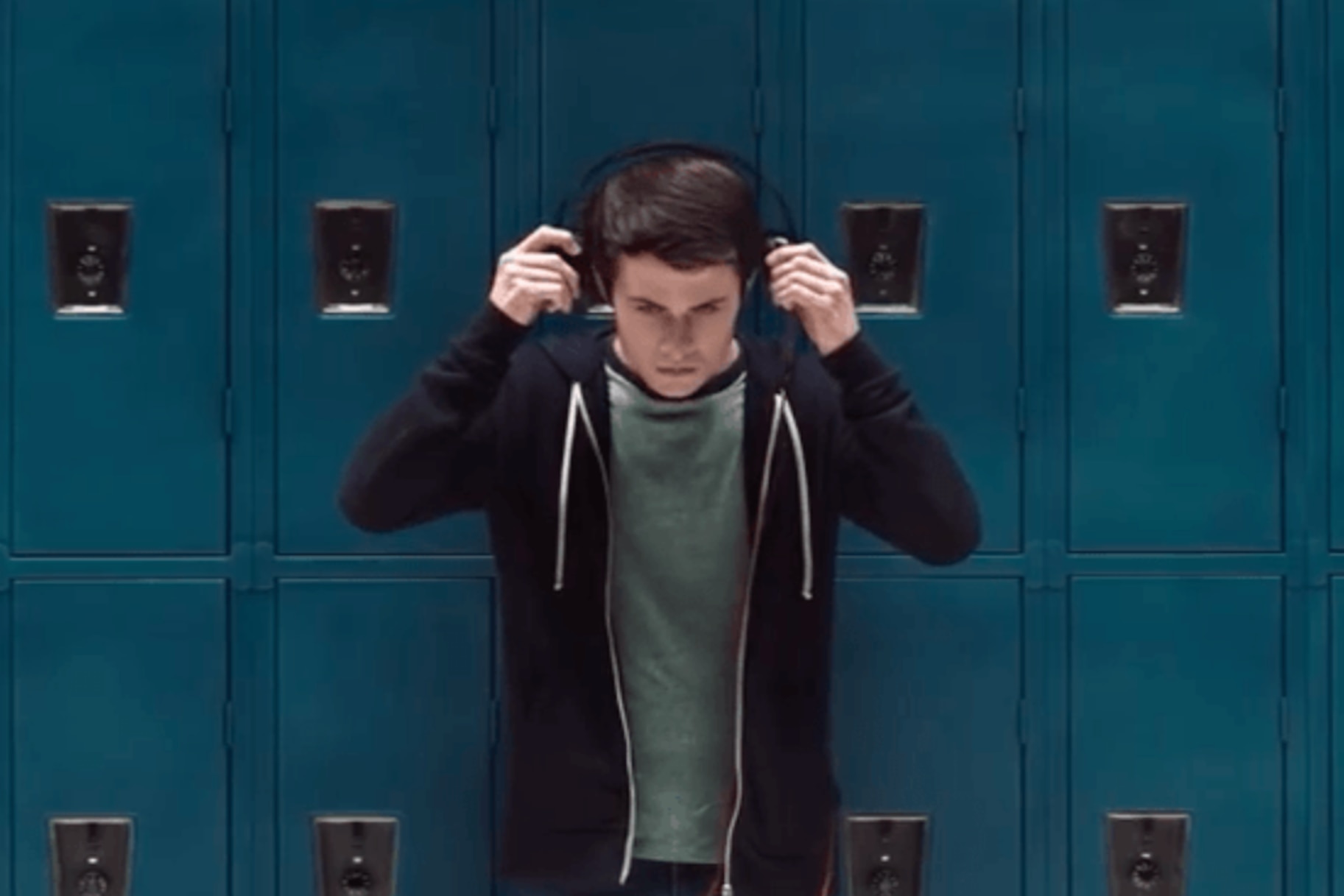Create a free profile to get unlimited access to exclusive videos, breaking news, sweepstakes, and more!
'13 Reasons Why' Second Season To Come With New Warning Video
The Selena Gomez-produced show responds after backlash that it glorifies suicide.

Netflix's "13 Reasons Why" was a breakout hit of 2017. Based on a young adult novel, the show follows the events that lead up to the suicide of its main character, teenager Hannah Baker.
After its portrayal of her suicide, which some deemed graphic or even glorifying the act, the show has released a new warning video prior to season two.
In the video, the show's cast breaks down the fictional nature of the show. The actors featured: Katherine Langford who plays Hannah Baker, Justin Prentice who plays Bryce Walker, Dylan Minnette who plays Clay Jensen and Alisha Boe who plays Jessica Davis.
"'13 Reasons Why is a fictional series that tackles tough, real world issues, taking a look at sexual assault, substance abuse, suicide and more," Prentice says.
"By shedding a light on these difficult topics, we hope our show can help viewers start a conversation, says Langford.
"But if you are struggling with these issues yourself, the series may not be right for you," warns Davis. "Or you may want to watch it with a trusted adult."
The show is produced by Selena Gomez and her mother, Mandy Teefey.
In season one, episodes tackled issues ranging from date rape, cyber bullying and drug and alcohol abuse.
Hannah Baker's spiral downwards begins when a fellow classmate takes an explicit photo without her knowledge and sends it to the entire high school. Bullying and harassment ensue. Ultimately, Hannah is sexually attacked by classmate Bryce Walker and ends up slitting her wrists. In a series of 13 cassette tapes, she tells the people in her life how they contributed to her death.
Despite being fiction, "13 Reasons Why" garnered real controversy from parents and critics, according to Variety. In 2017, researchers said that searches around suicide increased dramatically after the first season, according to The Hollywood Reporter. There were at least 900,000 more than expected Google searches including the word "suicide." The search terms included suicide methods, suicide hotlines and suicide prevention.
The study didn't prove a link between the show and actual suicides.
As previously reported, producers of the show had consulted with mental health experts during the creation of the first season, hoping to tackle the subject responsibly.
"From the very beginning, I agreed that we should depict the suicide with as much detail and accuracy as possible. I even argued for it — relating the story of my own suicide attempt to the other writers," Nic Sheff, one of the show's writers, said in Vanity Fair before the study was published.
However, two families in California claimed that the show triggered their daughters to commit suicide. High school sophomores Bella Herndon and Priscilla Chiu killed themselves in April and both, according to their families, watched the show.
I didn't find out until the funeral,” said John Herndon, father of Bella, according to ABC News. “Bella's friends told me that three days before she hung herself she had finished watching this Netflix show '13 Reasons Why.’ The more I looked into it, the more appalled I was."
Peter Chiu, Priscilla's uncle, also criticized the show.
“It’s very graphic, especially the two-minute scene where she slits her wrists in a bathtub,” he told KTVU about the show. “I feel it’s dangerous for that small percentage of young adults who the show can become a trigger for them and I feel as if the show gives only one alternative for cyber bullying and other teenage issues.”
On Wednesday, Netflix shared video content on how the show has helped some viewers get through difficult circumstances. Those struggling with issues are urged to visit 13ReasonsWhy.info for resources, including suicide prevention and mental health links.






